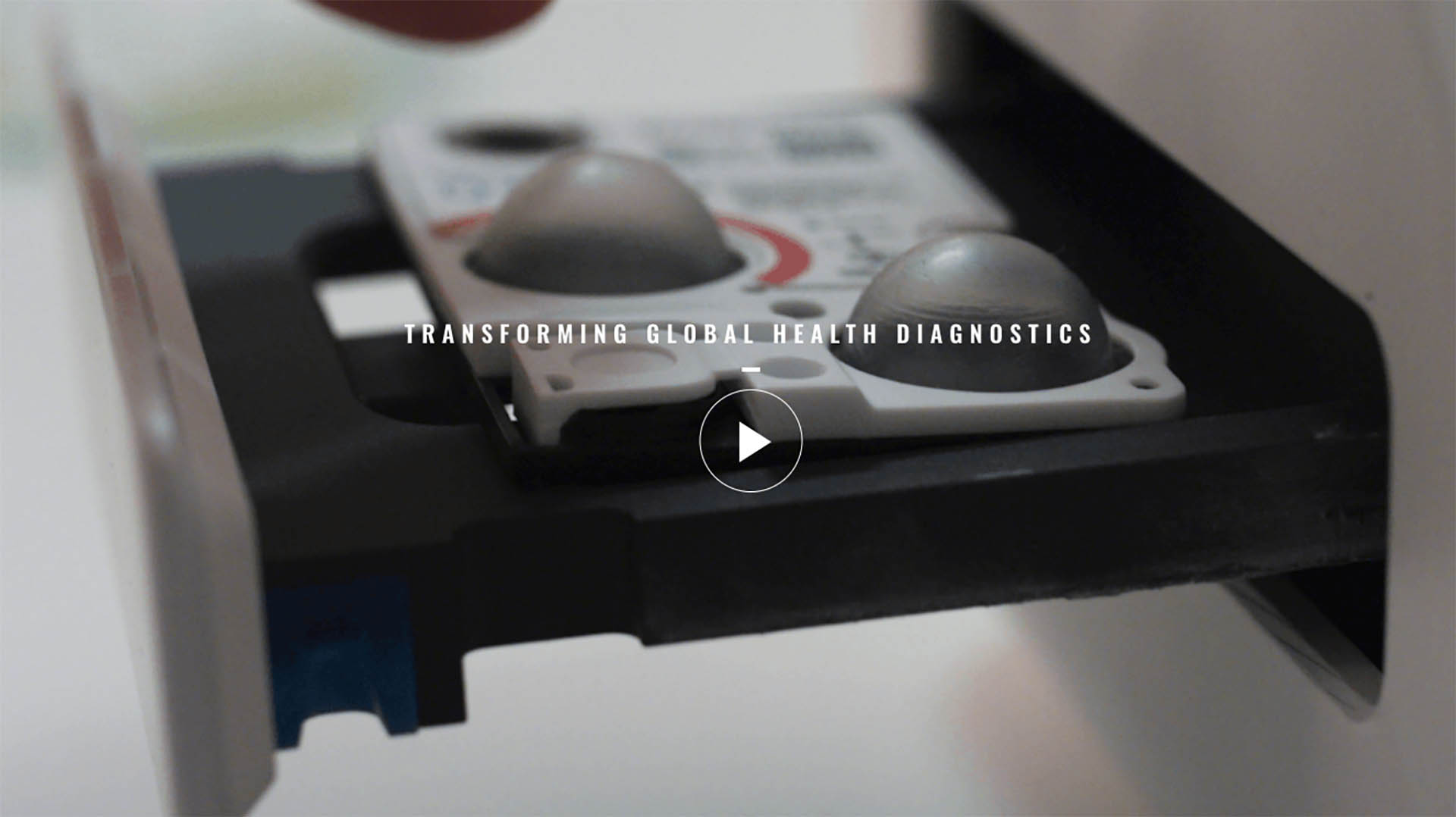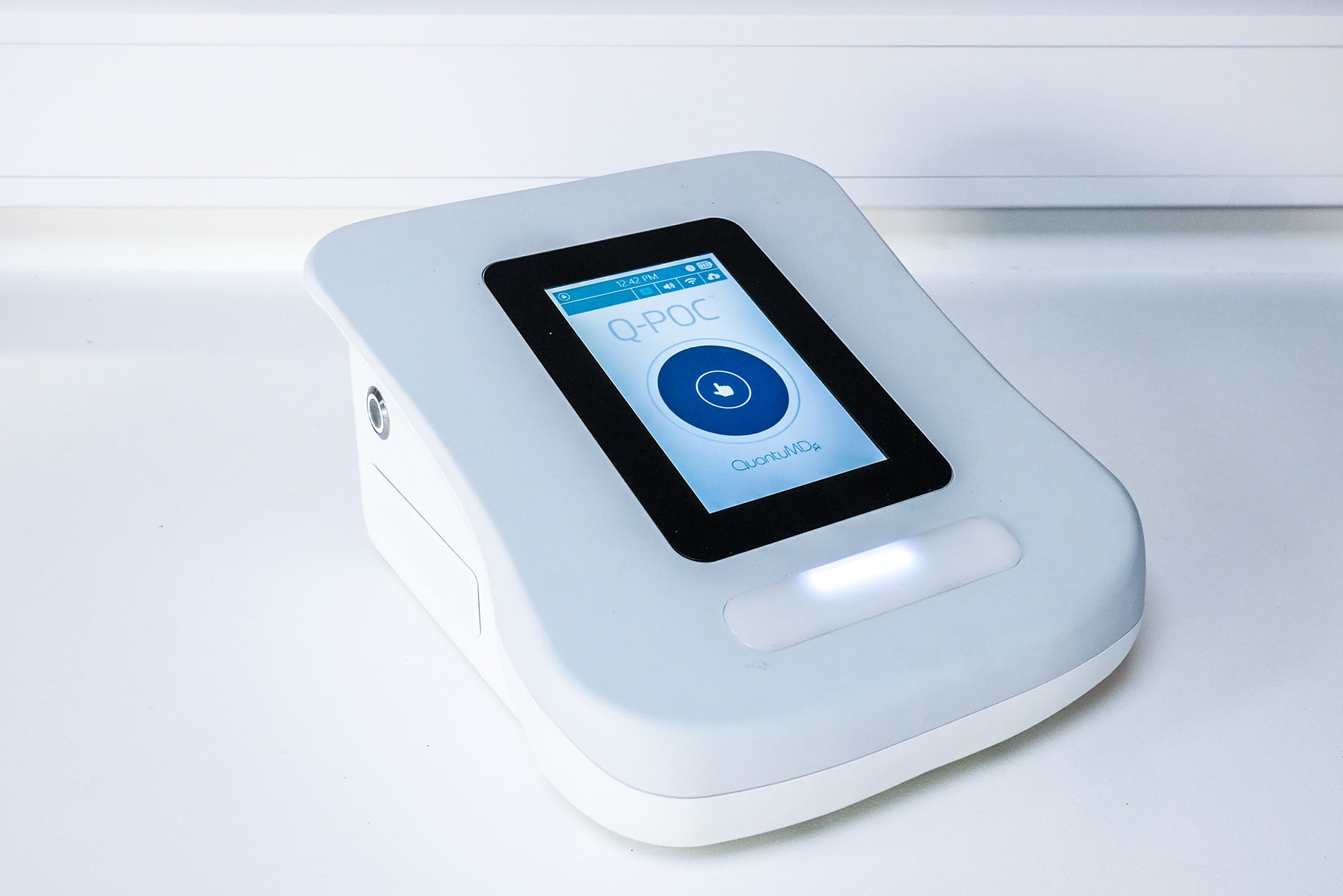MOLECULAR DIAGNOSTIC MULTIPLEXED POINT-OF-CARE TESTING
Sample to answer analysis in less than 30 minutes
Introduction
Advances in disease diagnostics now offer clinicians a staggering degree of accuracy, but access to results generally requires a well-equipped lab and a few weeks waiting time. This has led to the rise in demand for point-of-care testing (POCT) where the patient sample is conveniently tested close to the point-of-care, resulting in a faster diagnosis.
To overcome these limitations, British medical device developer QuantuMDx (QMDx) and SCIENION have partnered to take QMDx’s highly multiplexed nanowire array to market. This biosensor is a component of QMDx’s flagship product Q-POC™, a handheld molecular diagnostic device that will provide results in 30 minutes for a few pounds at the patient’s side.
QuantuMDx is a life science tools and diagnostics company headquartered in Newcastle upon Tyne, UK with offices in the USA and Singapore. QuantuMDx’s mission is to improve and democratise global healthcare by developing transformative technologies that will enable rapid, accurate and affordable diagnostic testing in the community.
QuantuMDx is currently developing the Q-POC™ platform: a point-of-care, rapid, portable, molecular analyser to diagnose a range of diseases in under 30 minutes, depending on the complexity of the test, including tuberculosis, STIs and HPV.
Q-POC™ differs from most conventional point-of-care diagnostic tools in that it analyses the DNA of pathogens rather than the proteins within the sample. The device depends on microfluidic technology, which essentially allows fluids to pass through different microscopic channels of different diameters. The device has a built-in cell phone technology, enabling the test results to be geo-stamped and shared in real time, potentially opening the door to continuous monitoring of disease and antimicrobial resistance.
Scienion began supporting QuantuMDx in 2015, installing the sciFLEXARRAYER SX printer during their early research phase, to enable high throughput microarray production.
Since then, QMDx utilises SCIENION’s proprietary ultra-low volume liquid handling technologies to transfer biological material onto QMDx’s novel biosensor. Each nanowire in the array is printed with molecular probes; with hundreds of nanowires in each silicon biosensor chip, the multiplexing potential is massive.
“We have worked in partnership with the team at SCIENION who have supported our development of customised arrays – enabling us to print DNA to a range of substrates, such as plastic, glass or silicon, depending on the application. The tool offers accurate, precision printing, at speed. As the printer is scalable we’ll eventually be able to produce high volumes of microarrays when we start manufacturing and bring our molecular diagnostic assays to market.”
Dr Jennifer Hannant, Head of Chemistry at QuantuMDx.
The SX: Compact Solution for High Throughput
The companies’ longstanding relationship was cemented with QMDx’s purchase of SCIENION’s sciFLEXARRAYER SX, and will continue to grow as the companies embark on a number of development projects to take the biosensor characterisation from R&D to mass manufacturing.



